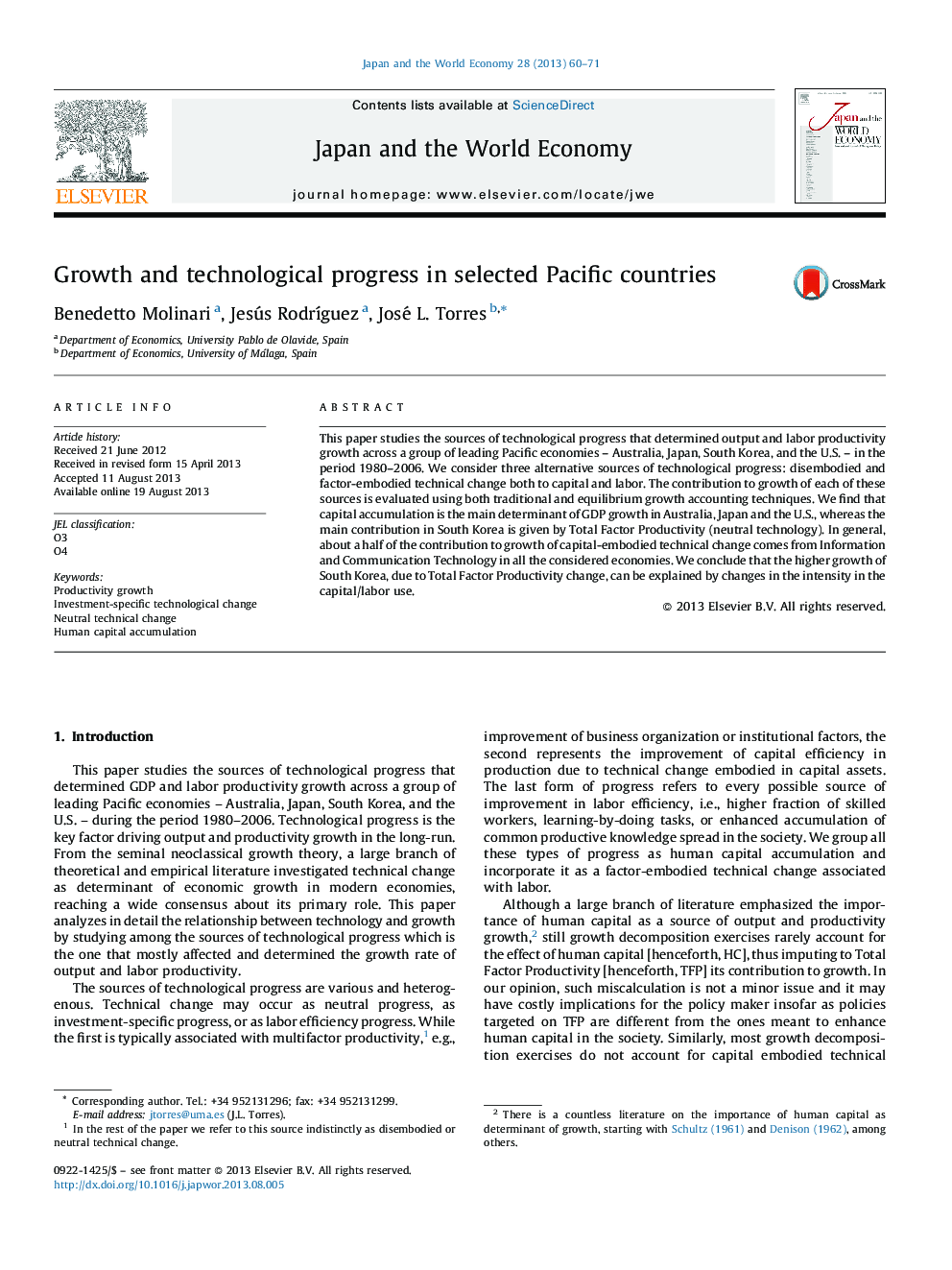| Article ID | Journal | Published Year | Pages | File Type |
|---|---|---|---|---|
| 5086188 | Japan and the World Economy | 2013 | 12 Pages |
Abstract
This paper studies the sources of technological progress that determined output and labor productivity growth across a group of leading Pacific economies - Australia, Japan, South Korea, and the U.S. - in the period 1980-2006. We consider three alternative sources of technological progress: disembodied and factor-embodied technical change both to capital and labor. The contribution to growth of each of these sources is evaluated using both traditional and equilibrium growth accounting techniques. We find that capital accumulation is the main determinant of GDP growth in Australia, Japan and the U.S., whereas the main contribution in South Korea is given by Total Factor Productivity (neutral technology). In general, about a half of the contribution to growth of capital-embodied technical change comes from Information and Communication Technology in all the considered economies. We conclude that the higher growth of South Korea, due to Total Factor Productivity change, can be explained by changes in the intensity in the capital/labor use.
Related Topics
Social Sciences and Humanities
Economics, Econometrics and Finance
Economics and Econometrics
Authors
Benedetto Molinari, Jesús RodrÃguez, José L. Torres,
